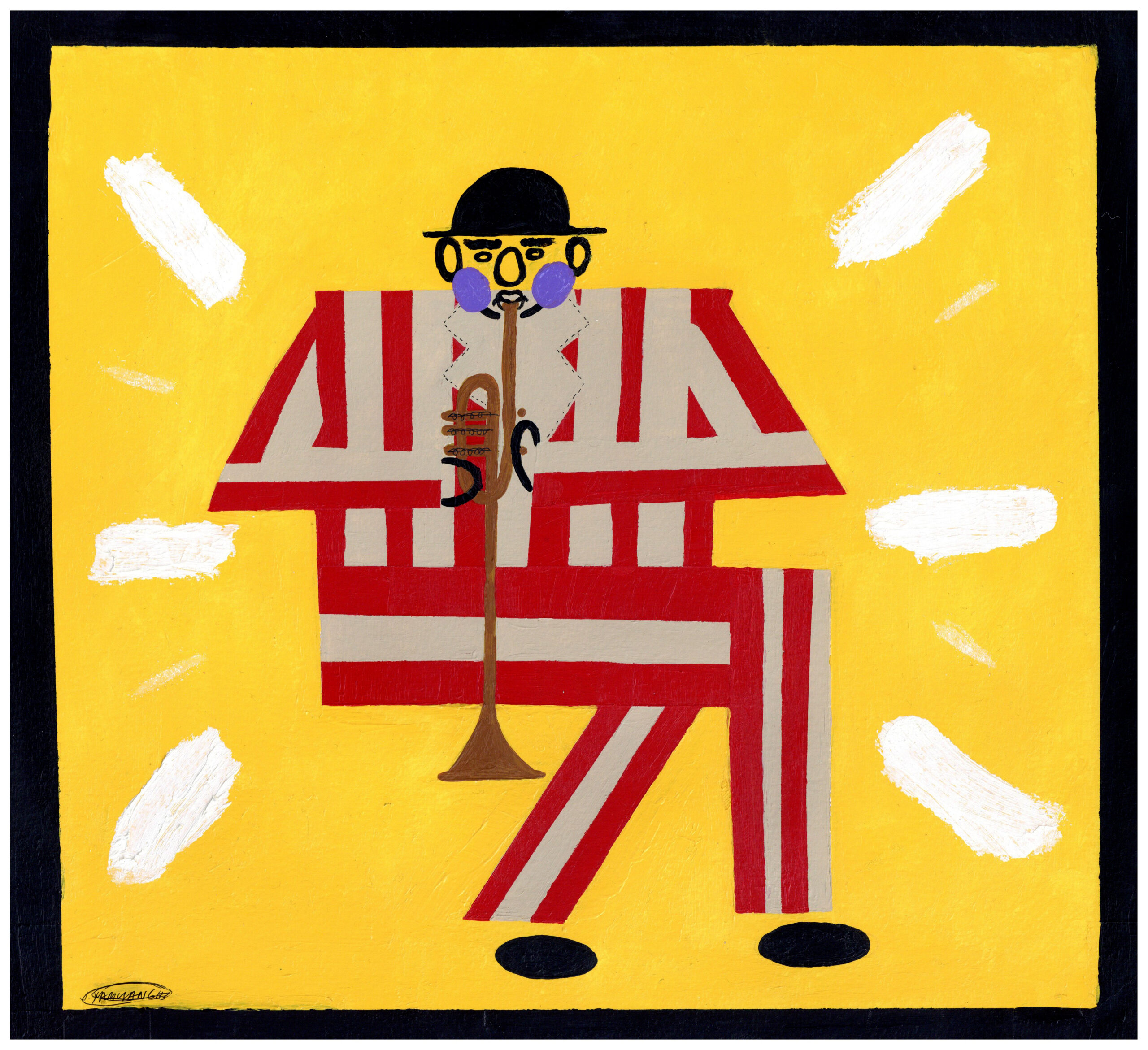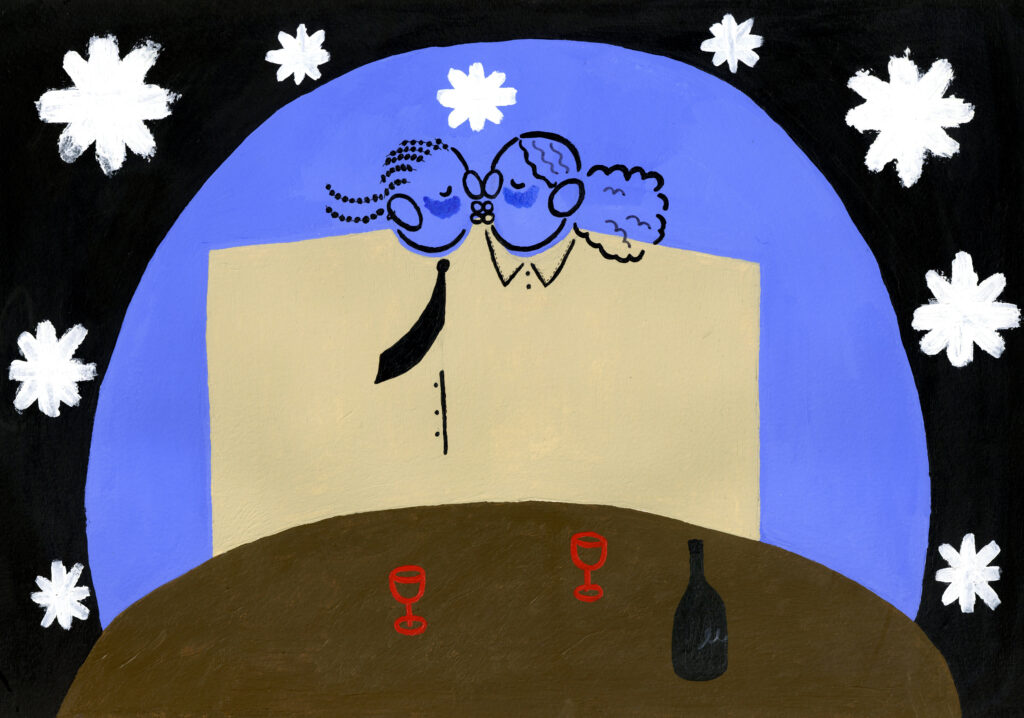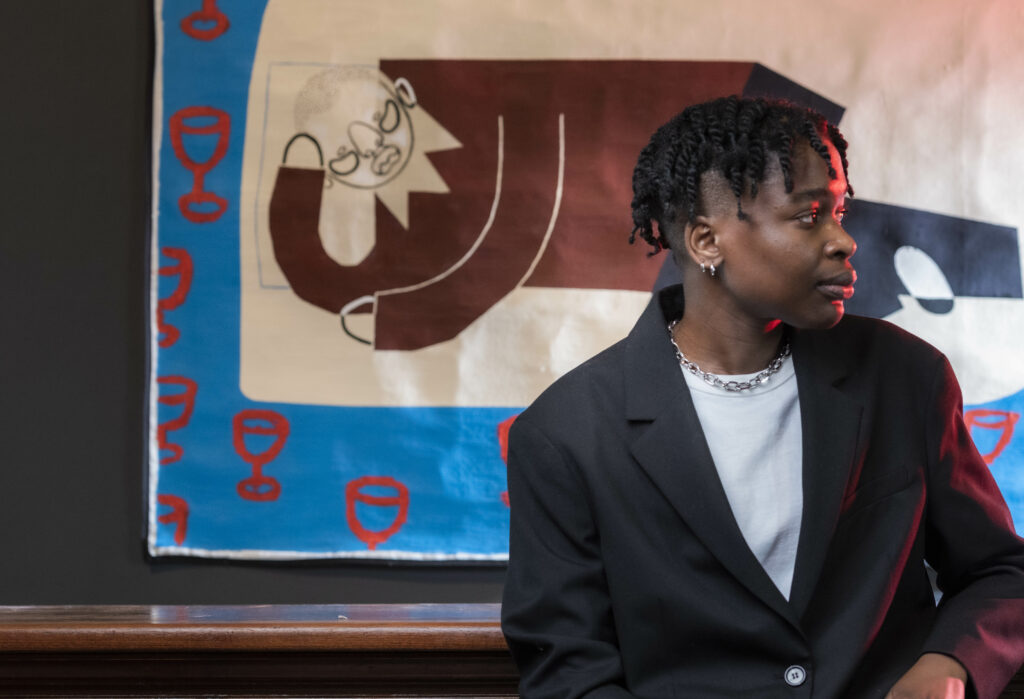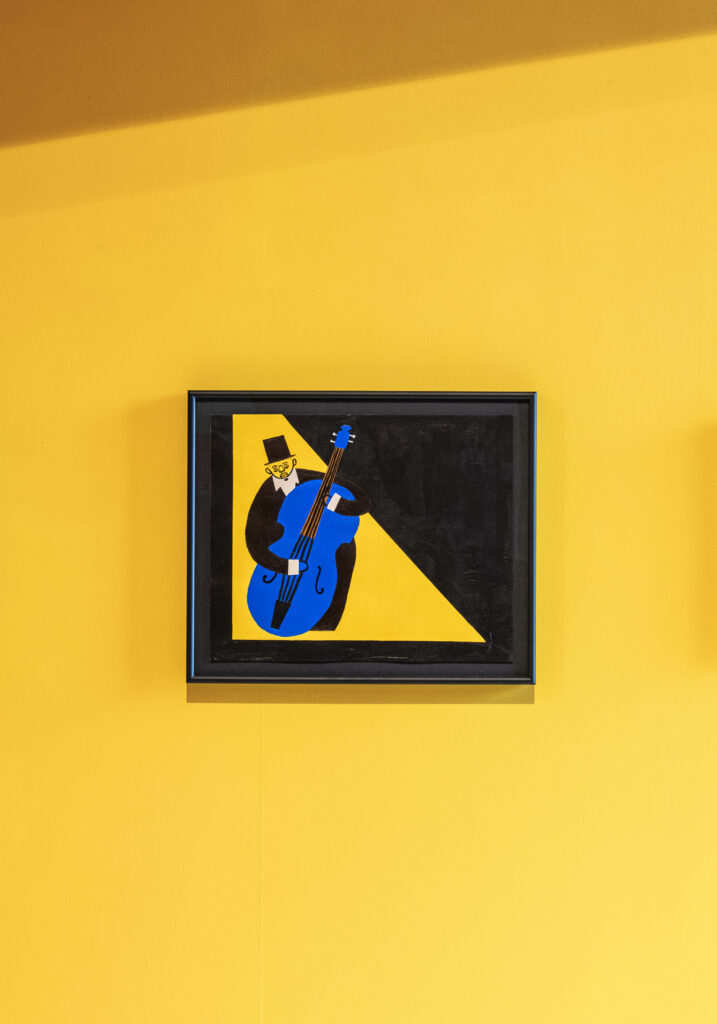Step inside Joy Yamusangie’s fictional jazz club to resurrect a transgender trumpet player
Their bold works adorn the walls of Now Gallery to take us on a journey of identity and fantasy.
Precious Adesina
20 Apr 2022

Joy Yamusangie
In 1998, the Scottish writer Jackie Kay wrote her debut novel, Trumpet. The book reflects on the life of the fictional jazz artist Joss Moody through the memories of his friends and family. Most noticeably in the book, after Joss’s death, it is publicly revealed that he was assigned female at birth, a truth that only Millie, the widow he left behind, knew. Feeling Good, a collection of Joy Yamusangie’s colourful works on display at Now Gallery in southeast London is inspired by this incredible story.
Feeling Good, a title based on the Nina Simone song of the same name, is set in an imagined club, one where Joy envisages Joss, and Billy Tipton, the real-life person the book was based on, would have enjoyed performing at. Joy’s vibrant paintings hang in corridors and over the pianos, tables and stools of the ‘venue’. “What is good about art is that you can create new worlds,” Joy explains over the phone of the scene they have made, adding that they visualise everyone in their club being transmasculine like themself, Joss and Billy. “They would be accepted and embraced, and it would be a space where they could just play jazz and just be.”
“Today, Joy operates in a much more controlled environment, stencilling characters and building scenes where black and queer figures dance, perform, and simply exist”
Joy’s interest in art stems from their childhood experience making comics and video animations to entertain their younger sister while growing up in London. “When I think about when I learnt about different artists, I was taught about the old masters who were white. So, I didn’t think I could be an artist for a long time until I went to college and my teachers were predominantly black,” they say. “That made me realise that I could do this as a career. Before, I thought, ‘I have to find something else to do because [creating art] probably isn’t for me’.” They later went on to study illustration at Portsmouth University, though they have mentioned in many interviews that they did not enjoy their experience there. In one, Joy says their unhappiness during that time is reflected in their art, as they worked almost exclusively in black and white and, in another, that the “blatant” racism they experienced fueled the stories in their pieces.


Now, they have almost 40,000 followers on Instagram, have been commissioned by Tate Collectives and their work was selected for the Royal Academy Summer Show in 2021. Over the years, their oeuvre has developed. At first, their signature style mainly included kinetic Basquiat-esque mixed media landscapes with words, phrases, figures and faces clashing with vivid colour palettes. Today, Joy operates in a much more controlled environment, stencilling characters and building scenes where black and queer figures dance, perform, and simply exist.
What initially attracted Joy to Kay’s novel was the name. “I read Trumpet because I was thinking about music and instruments. I saw the title, and it didn’t say much about it, but I thought, ‘let me just read it’,” Joy says. But it was their own personal understanding of the protagonist’s life that motivated them to create a body of work around it. “I had just decided to start learning the saxophone, and I’m a trans artist myself. I wouldn’t say I’m a trans musician because I’m not a musician level – but I’m an artist, and I’m interested in jazz.”
Jackie Kay revealed in an interview that she found inspiration for the story from the life of Billy Tipton, an American Jazz musician with a similar story, a fact that also intrigued Joy. “There are some differences in that Billy Tipton is white [while Joss Moody is black] and is a saxophone player and pianist, but their stories are the same in the sense that his loved ones only found out that he was trans after he died,” they add. Joy felt inclined to learn more about the fictional and real-life characters. “What particularly interested me about both of their stories was that they were both trans jazz musicians.”
“They are also all dressed in a way that is reminiscent of the gender neutrality of the Congolese dandy style, known as Sapeurism”
The power found in looking back in history and finding people with whom you share similarities is prevalent in Feeling Good’s conception. “I think history can inspire the now,” Joy says. Beyond, Trumpet, the colours that Joy uses come from pictures of their family. “Looking back has a massive influence on what I do next. Sometimes when I’m out of ideas, it helps to just go through old family photos.” Not only are the people in the pieces interacting with each other as you’d expect in a club – people are kissing, crying, fighting, consoling each other, and, of course, playing instruments – but they are also all dressed in a way that is reminiscent of the gender neutrality of the Congolese dandy style, known as Sapeurism, which Joy says family members in old photographers dressed similar to.
Congolese dandies are known for their exceptionally fashionable suits, silk ties, top and bowler hats, and chic glasses, among other ornaments added to complement their fashion sense. “What I like about their style is that it can look like it’s clashing in terms of colour and print, but actually it is carefully thought out in terms of what colours they’re wearing and what those colours mean,” Joy says. They explain there can also be rules such as only sticking to three colours – “the main colours for this show are red, yellow and black” – but most importantly, Joy appreciates the fact that the attire associated with Sapeurism isn’t confined to just men. “You get a lot of Congolese dandies who are women,” Joy says. “They’re dressed in full-on suits, the pipes, the sticks. That’s just the style[…] I’ve tried to recreate some of those. They’re quite jazzy outfits.”
Joy’s imagined club may be fictional, but the experiences informing it not only give us a better understanding of trans culture and history, but Joy’s own life itself.










